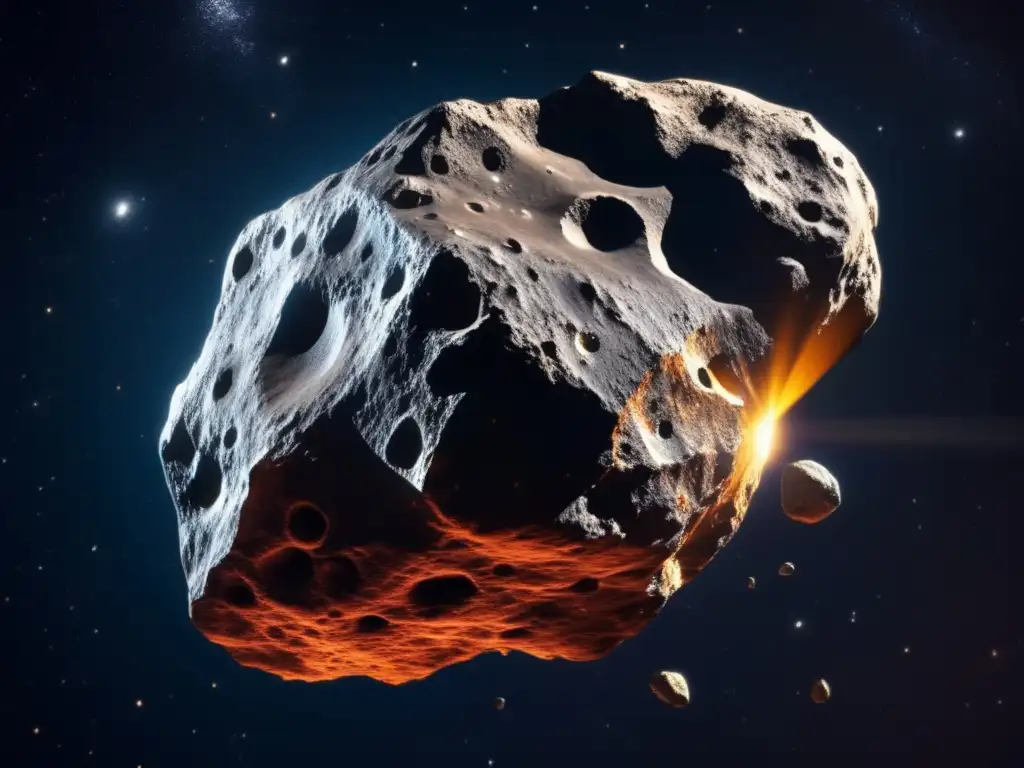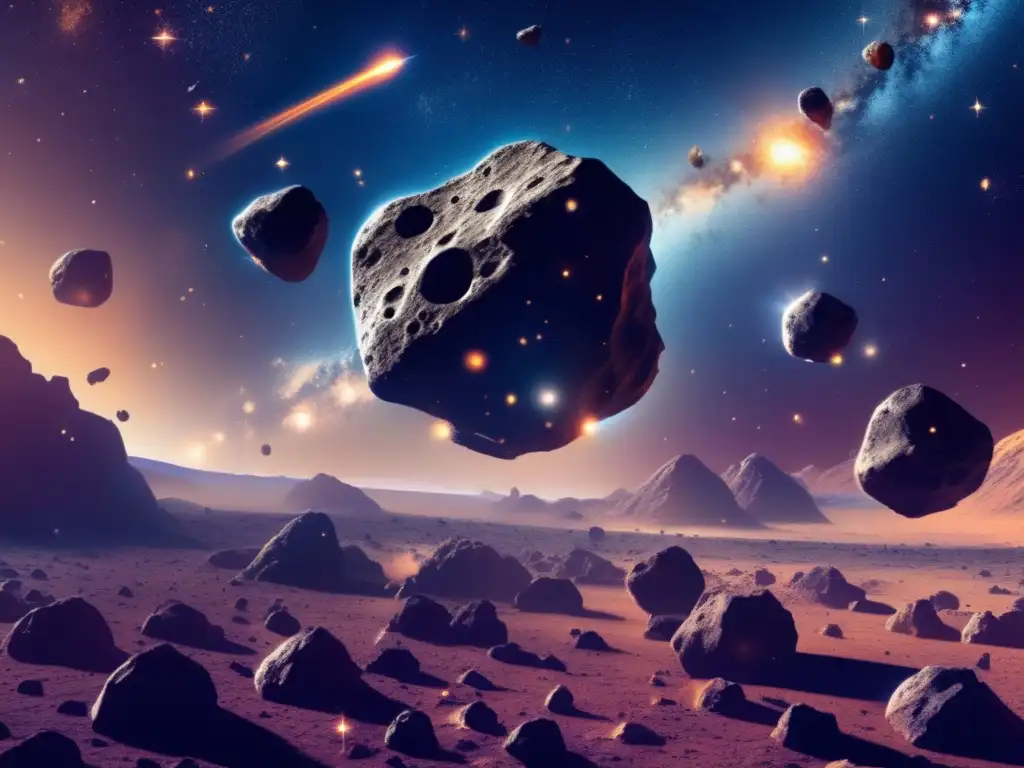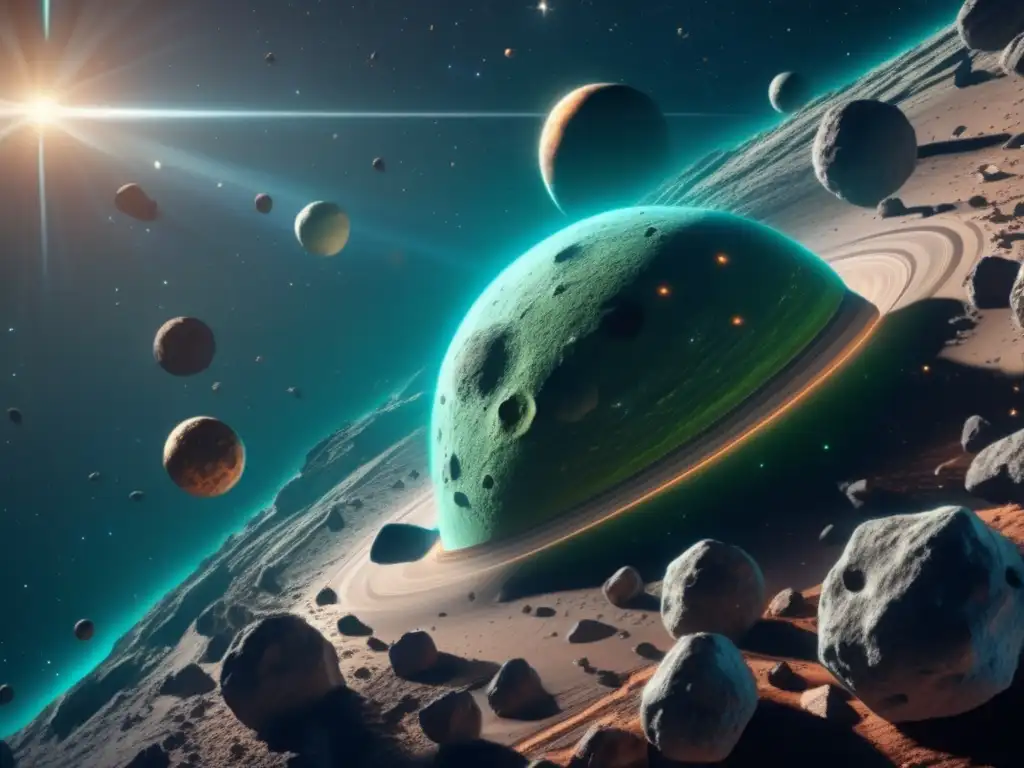Choosing The Right Time For Asteroid Observation

Introduction
Asteroids, those amazing celestial objects that have captured our fascination for centuries, continue to ignite our curiosity and desire to explore the mysteries of the universe. The study of asteroids provides valuable insights into the formation and evolution of our solar system, making it an important field of research for astronomers and scientists alike. In this article, we will delve into the significance of choosing the right time for asteroid observation, exploring various factors that impact the effectiveness of our observations.
The Influence of Orbital Positions

Earth's Position in Relation to Asteroids
One of the key factors that affect the observation of asteroids is the position of the Earth in relation to these celestial bodies. As asteroids follow their own orbit around the Sun, their positions in the sky change over time. By understanding the orbital parameters of asteroids and analyzing their predicted positions, astronomers can determine the best times to observe them from Earth.
Oppositions and Close Approaches
Astrologers eagerly await oppositions, which occur when an asteroid is directly opposite the Sun in the sky as observed from Earth. During oppositions, asteroids are at their closest approach to our planet, appearing larger and brighter, making them ideal for observation. Close approaches, on the other hand, refer to instances when asteroids pass relatively close to Earth, offering excellent opportunities for detailed studies and measurements.
Orbital Periods and Retrograde Motions
Understanding the orbital periods of asteroids is crucial for planning observations. Some asteroids have shorter periods, while others can take years or even decades to complete a single orbit. Additionally, some asteroids exhibit retrograde motion, where their apparent movement in the sky appears opposite to that of the stars due to the complex gravitational interactions within our solar system. These factors must be considered when determining the right time for asteroid observation.
The Role of Astronomical Phenomena

Meteor Showers and Asteroid Dust
Meteor showers, caused by the Earth passing through the debris left behind by comets or asteroids, offer unique opportunities to study the composition and characteristics of asteroids. Observing meteor showers can provide valuable insights into the parent bodies and their possible connections to specific asteroid groups. Timing observations during meteor showers increases the likelihood of detecting asteroid dust particles and studying their properties.
Eclipses and Transits
Eclipses and transits involving asteroids are rare events, but they offer extraordinary scientific value. During an eclipse, an asteroid passes in front of a star, temporarily blocking its light. By carefully observing these events, astronomers can gather data on the asteroid's size, shape, and composition. Transits occur when an asteroid passes in front of a larger celestial body, such as a planet. These events allow scientists to measure the asteroid's size and track its movement accurately.
Planetary Alignments and Gravitational Assists
Planetary alignments and gravitational assists play a crucial role in space exploration missions, including those targeted towards asteroids. By taking advantage of the gravitational pull of planets, spacecraft can achieve significant velocity changes, conserving fuel and reducing mission duration. However, aligning trajectories with the positions of planets requires careful calculations and coordination, making the timing of observations and launches critical for successful missions.
Optimal Observation Techniques

Telescopes and Spectroscopy
Modern telescopes equipped with advanced imaging technologies have revolutionized asteroid observation. High-resolution images allow astronomers to study the surface features, composition, and potential geological activities of these objects. Spectroscopic analysis provides insights into the chemical composition of asteroids, aiding in our understanding of their origins and histories.
Radar and Space Missions
Ground-based radar systems enable detailed observations of asteroids, revealing their shape, size, rotation rates, and even surface roughness. Radar observations can help determine the composition of asteroids, identify potential binary or triple systems, and measure the exact distances between Earth and these celestial bodies. Space missions, such as NASA's OSIRIS-REx and Japan's Hayabusa2, provide close-up views, sample return capabilities, and comprehensive data to enhance our knowledge of asteroids.
Citizen Science and Collaboration
Citizen science initiatives involving asteroid observation are becoming increasingly popular. Enthusiastic individuals can contribute to scientific research by participating in asteroid tracking programs, reporting sightings, and assisting in data analysis. Collaboration among professional astronomers, amateur astronomers, and the general public fosters a broader understanding of asteroids and their significance, enhancing the overall quality of observations.
Frequently Asked Questions

-
How can I determine when an asteroid will be visible from my location?
Understanding the orbital parameters of asteroids and using astronomy software or online tools can help you track their positions and predict their visibility from your specific location.
-
What is the best time to observe a close-approaching asteroid?
The best time to observe a close-approaching asteroid is during its closest approach to Earth, as it will appear larger and brighter in the sky. Consult reliable sources or observatories for accurate information on upcoming close approaches.
-
Why are meteor showers important for asteroid research?
Meteor showers offer opportunities to study the composition and properties of asteroids by observing the debris left behind as the Earth passes through their trails. This data aids in understanding asteroid parent bodies and their relationships.
-
What are the advantages of radar observations compared to telescopic observations?
Radar observations provide detailed information about an asteroid's shape, size, rotation rates, and surface roughness. They also allow for precise distance measurements, aiding in the determination of an asteroid's orbit.
-
How can I contribute to asteroid observation as a citizen scientist?
You can participate in various citizen science programs that involve asteroid tracking, reporting sightings, and assisting in data analysis. Check with reputable astronomy organizations or websites for opportunities to get involved.
Conclusion
Choosing the right time for asteroid observation is crucial for maximizing scientific discoveries and furthering our understanding of these captivating celestial objects. By considering orbital positions, astronomical phenomena, and optimal observation techniques, astronomers can capture valuable data and unlock the secrets held within the asteroids of our solar system. Whether through professional research, amateur contributions, or citizen science initiatives, it is through our collective efforts that we continue to unveil the wonders of the universe.
We encourage readers to share their thoughts and engage with the Asteroid Realm community. Consider subscribing to our website, sharing this article on social networks, and actively participating in discussions related to asteroids and space exploration. Thank you for joining us on this cosmic journey!
Additional Resources

For further exploration on the topic of asteroids and their observation, we recommend the following resources:
- NASA's Near-Earth Object Program: https://cneos.jpl.nasa.gov/
- The International Astronomical Union's Minor Planet Center: https://www.minorplanetcenter.net/
- Asteroid Observation Guide by Sky & Telescope: https://skyandtelescope.org/astronomy-resources/asteroid-observation-guide/
 Tips To Enhance Your Asteroid Observation Experience
Tips To Enhance Your Asteroid Observation Experience Binoculars Vs. Telescopes: Which Is Better For Asteroid Viewing?
Binoculars Vs. Telescopes: Which Is Better For Asteroid Viewing? The Challenges Of Asteroid Observation And How To Overcome Them
The Challenges Of Asteroid Observation And How To Overcome ThemIf you want to discover more articles similar to Choosing The Right Time For Asteroid Observation, you can visit the Telescopes and Asteroid Observation category.
Leave a Reply

Articulos relacionados: